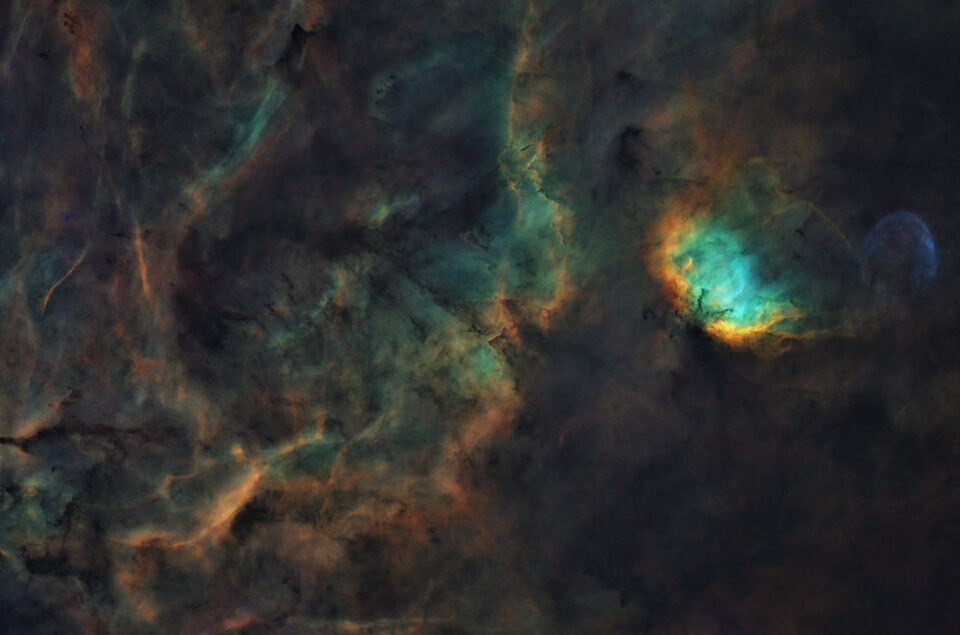One of the most photographed targets in the northern hemisphere summer sky, the Sh2-101, or Tulip Nebula, is a fascinating HII emission region in the constellation of Cygnus.
Next to the Tulip it is possible to observe the bow shock wavefront produced by the strong Cygnus X-1 x-ray binary system. The system consists of a bright star (HDE 226868) and a high mass very small black hole that orbit around each other in a period of 5,6 days.
The black hole pulls gas from the surface of the star forming a pair of relativistic jets. The curved bow shock structure shown in the image is the result of one of these jets interacting with interstellar material.
Total integration time 16 hours in SHO palette
High resolution here










